Species C. masoni Ford, 1958 Phylum Petalonamae Rank Genus | Scientific name Charnia Higher classification Charniidae | |
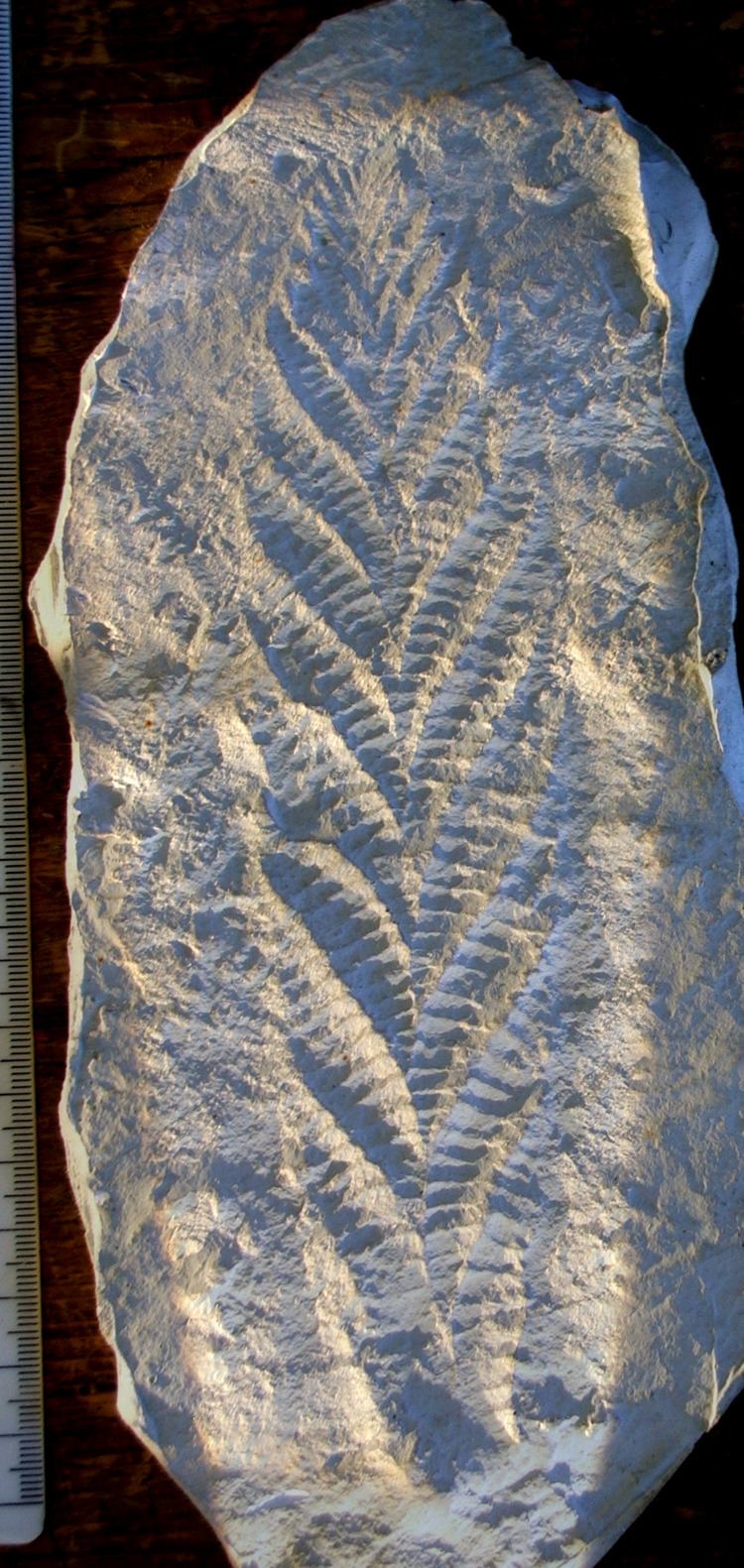 | ||
Similar Dickinsonia, Charniodiscus, Spriggina, Rangeomorph, Kimberella | ||
The dinosaur gallery star objects the charnia fossil part one charnia discovery
Charnia is a genus of frond-like Ediacaran lifeforms with segmented, leaf-like ridges branching alternately to the right and left from a zig-zag medial suture (thus exhibiting glide reflection, or opposite isometry). The genus Charnia was named after Charnwood Forest in Leicestershire, England, where the first fossilised specimen was found. It is a highly significant fossil.
Contents
- The dinosaur gallery star objects the charnia fossil part one charnia discovery
- The dinosaur gallery star objects the charnia fossil part two the future of charnia
- Diversity
- Distribution
- Discovery
- Significance
- Ecology
- References
The living organism was a type of life form that grew on the sea floor and is believed to have fed on nutrients in the water. Despite Charnia's fern-like appearance, it is not a plant or alga because the nature of the fossilbeds where specimens have been found demonstrate that it originally lived in deep water, well below the photic zone where photosynthesis can occur.

The dinosaur gallery star objects the charnia fossil part two the future of charnia
Diversity
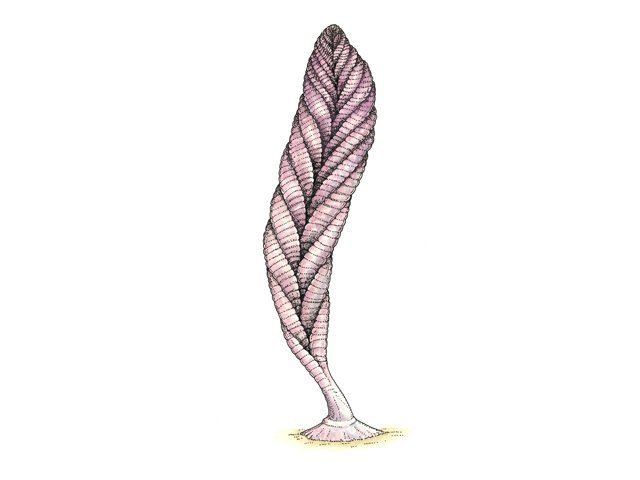
Several Charnia species were described but only the type species C. masoni is considered valid. Some specimens of C. masoni were described as members of genus Rangea or a separate genus Glaessnerina:
Two other described Charnia species have been transferred to two separate genera
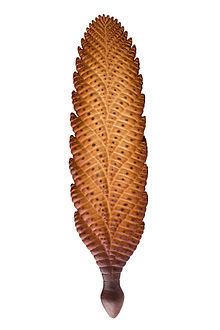
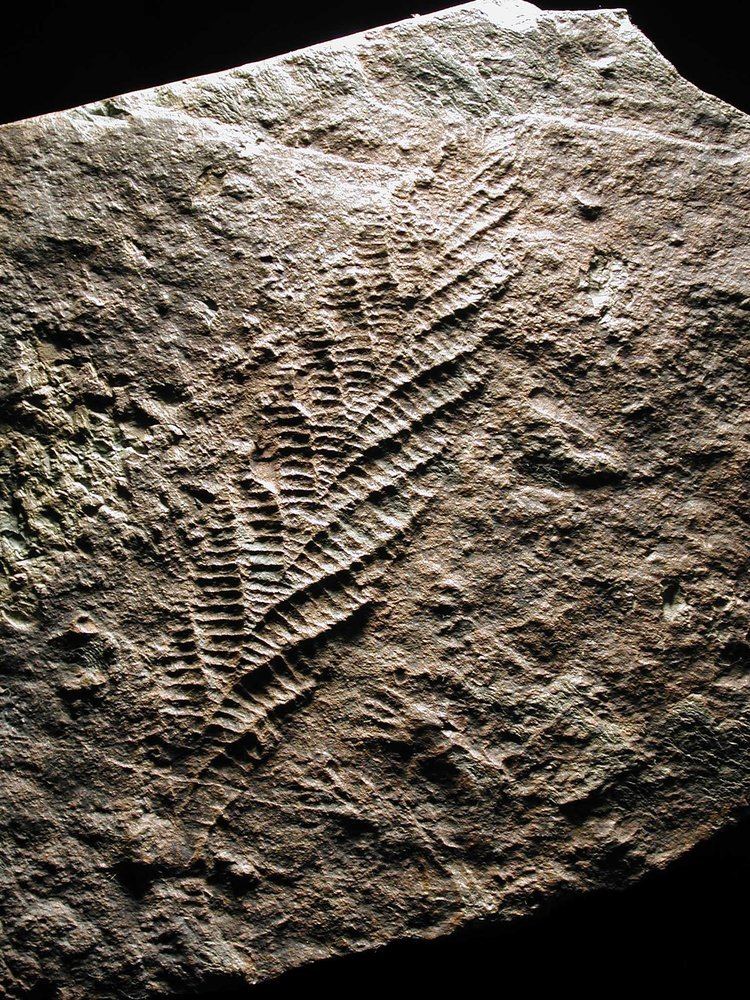
A number of Ediacaran form taxa are thought to represent Charnia (or Charniodiscus) at varying levels of decay; these include the Ivesheadiomorphs Ivesheadia, Blackbrookia, Pseudovendia and Shepshedia.
Distribution

Charnia masoni was first described from Charnwood Forest in England and subsequently was found in Ediacara Hills in Australia, Siberia and White Sea area in Russia and Precambrian deposits in Newfoundland, Canada.
Discovery
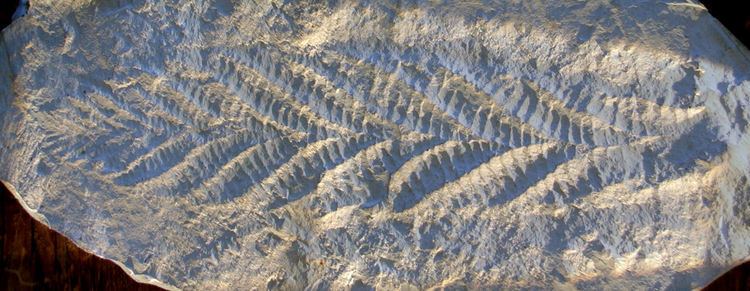
Charnia masoni was brought to the attention of scientists by Roger Mason, a schoolboy who later became a professor of metamorphic petrology. In 1957 Mason and his friends were rock-climbing in Charnwood Forest, in what is now a protected fossil site in Central England. They noticed this unusual fossil, and Mason took a rubbing of the rock. He showed the rubbing to his father, the minister of Leicester's Great Meeting Unitarian Chapel, who also taught at the local university and knew Trevor Ford, a local geologist. Mason took Ford to the site; Ford wrote up the discovery in the Journal of the Yorkshire Geological Society.

The holotype (the actual physical example from which the species was first described) now resides, along with a cast of its sister taxon Charniodiscus, in New Walk Museum & Art Gallery, Leicester. Decades later it came to light that Tina Negus, then a 15-year-old schoolgirl, had seen this fossil a year before the boys but her geography schoolteacher discounted the possibility of Precambrian fossils. Mason acknowledges, and the museum's Charnia display explains, that the fossil had been discovered a year earlier by Negus, "but no one took her seriously". She was recognised at the 50th anniversary celebrations of the official discovery.
Significance
Charnia is a highly significant fossil for several reasons. Firstly, it is the first fossil that was ever described that came from undoubted Precambrian rocks. Until this point the Precambrian was thought to be completely devoid of fossils and consequently possibly of macroscopic life. Despite similar fossils being unearthed in the 1930s (in Namibia) and the 1940s (in Australia) these forms were assumed to be of Cambrian age and so were considered unremarkable at the time. Secondly, Charnia has become an enduring image of Precambrian animals. Originally interpreted as an alga (Ford), it was spectacularly recast as a sea pen (a sister group to the modern soft corals) from 1966 onwards (Glaessner). With this image of Precambrian sea pens in mind, the gates were open for the recognition of many other of the major animal groups in the Precambrian. However, this sea pen interpretation has recently been discredited, and the current "state of the art" is something of a "statement of ignorance".
An increasingly popular theory has arisen since the mid-1980s, following the work of Adolf Seilacher who suggested that Charnia belongs to an extinct group of unknown grade that was confined to the Ediacaran Period. This theory suggests that almost all the forms that have been postulated to be members of many and various modern animal groups are actually more closely related to each other than anything else. This new group was termed the Vendobionta, a clade whose position in the tree of life is unclear, perhaps united by its construction via unipolar iterations of one cell family.
The holotype is a star attraction at the New Walk Museum. A day-long seminar in 2007 devoted to Charnia called it "Leicester's fossil celebrity".
Ecology
Little is known about the ecology of Charnia. It was benthic and sessile, anchored to the sea floor. According to one currently popular hypothesis, it probably lived in deep waters, well below the wave base, thus placing it out of range of photosynthesis. Furthermore, it has no obvious feeding apparatus (mouth, gut, etc.) so its lifestyle remains enigmatic. Some have speculated that it survived either by filter feeding or directly absorbing nutrients, and this is currently the focus of considerable research.
The growth and development of the Ediacara biota is also a subject of continued research, and this has discredited the sea pen hypothesis. In contrast to sea pens, which grow by basal insertion, Charnia grew by the apical insertion of new buds.
